Ellen Lupton: celebrating 30 years of thinking with type at Cooper Hewitt
A graphic designer, curator, educator, critic and writer that has greatly influenced design professionals and design lovers alike through her work, lectures, exhibitions, teachings and books, Ellen Lupton “has played a pivotal role in introducing and educating a broad spectrum of people to the importance of design in our lives,” said Matilda McQuaid, Cooper Hewitt’s acting curatorial director on the occasion of Lupton’s honorary designation as curator emerita that celebrates the conclusion of her tenure as the institution’s senior curator of contemporary design.
“Throughout her 30-year career at Cooper Hewitt, Lupton’s acclaimed exhibitions, lectures and publications have covered every aspect of design—from broad concepts of typography to practical elements of everyday life. The honorary designation celebrates Lupton’s decision to continue exploring and advancing contemporary design matters through her teaching, writing, workshops and lectures” reads the announcement.
“As a gifted curator and author, Ellen has organized many prescient exhibitions and publications, and her extraordinarily popular workshops and public programs attest to her generosity and inspiration as an educator” adds McQuaid.
“It has been a great privilege to contribute to Cooper Hewitt’s important work,” said Lupton. “Cooper Hewitt demonstrates every day that good design is necessary for people and the planet. I have lined up some exciting new projects, and I will continue my role teaching graduate students at the Maryland Institute College of Art.”
Prior to joining Cooper Hewitt in 1992, Lupton served as curator of the Herb Lubalin Study Center of Design and Typography at The Cooper Union, where she organized exhibitions and related publications on graphic design.
Lupton received her bachelor’s degree from The Cooper Union for the Advancement of Science and Art and earned a doctorate in communication design from the University of Baltimore. Recognized with notable international awards, including the American Academy of Arts and Sciences, inducted 2019; Alliance Graphique Internationale, inducted 2016; and the AIGA Gold Medal for Lifetime Achievement, 2007, Lupton’s
An avid author, Lupton’s insightful commentaries on the importance of typography and design are thoroughly expressed through her impressive line-up of published books.
“Writing is a secret weapon for designers, and design is a secret weapon of writers” said Lupton who has authored 34 publications about type and design.
“Publishing has always been the core of my work, and it’s a record of everything I’ve done. I’m proud of it” Lupton explained. “I want to keep publishing in whatever form it takes—digital or video—but I always want the written word to be part of what I do, because that’s what lasts.”
On the occasion of CH’s announcement we highlight four “primers for design history and studio practice internationally” authored by Lupton plus a video to watch, courtesy of Chicago Graphic Design Club aptly titled Seven Things Every Designer Needs to Know About Writing.
-
Design Is Storytelling published by Cooper Hewitt, Smithsonian Design Museum, 2017
“This book explores the psychology of visual perception from a narrative point of view. Presenting dozens of tools and concepts in a lively, visual manner, this book will help any designer amplify the narrative power of their work” writes Lupton. “Use this book to stir emotions, build empathy, articulate values and convey action; to construct narrative arcs and create paths through space; integrate form and language; evaluate a project's storytelling power; and to write and deliver strong narratives.”
A “playbook for creative thinking,” Design Is Storytelling “shows designers how to use storytelling techniques to create satisfying graphics, products, services, and experiences. Whether crafting a digital app or a data-rich publication, designers invite people to enter a scene and explore what’s there. An intriguing logo, page layout or retail space uses line, shape and form to lead users on dynamic journeys. Design Is Storytelling explores the psychology of visual perception from a narrative point of view. Presenting dozens of tools and concepts in a lively, visual manner, this book will help any designer amplify the narrative power of their work. Use this book to stir emotions, build empathy, articulate values, and convey action; construct narrative arcs and create paths through space; integrate form and language; evaluate a project’s storytelling power; and to write and deliver strong narratives.”
-
How Posters Work published by Cooper Hewitt, Smithsonian Design Museum, 2015
“The book is organized around active design principles. Concepts such as Simplify, Focus the eye, and Exploit the diagonal, are illustrated with a diverse range of posters, from avant-garde classics and rarely seen international works to contemporary pieces. Illustrated with over 150 works from the collection of Cooper Hewitt, Smithsonian Design Museum, How Posters Work shows how some of the world's most creative designers have mobilized principles of layout, composition, psychology and rhetoric.”
Ellen Lupton curates her top ten favorite typographic posters of all time
A book about how designers see, this primer in visual thinking shows the ways designers use principles of composition, perception, and storytelling to convey ideas and construct meaning. Presenting works by famous pioneers including Herbert Matter, Paul Rand, Paula Scher, Philippe Apeloig, and M/M (Paris), as well as rarely seen pieces by new and little-known artists from the Cooper Hewitt collection, How Posters Work explores how posters —powerful acts of visual communication— are produced and experienced.
-
The ABCs of [Triangle, Square, Circle]: The Bauhaus and Design Theory, published by Princeton Architectural Press, 2019, first published by Cooper Union and Princeton Architectural Press, 1991
“The Bauhaus, the legendary school in Dessau, Germany, transformed architecture and design around the world. This book broke new ground when first published in 1991 by introducing psychoanalysis, geometry, early childhood education, and popular culture into the standard political history of the Bauhaus.”
“[T]he most revealing of all the recent books on this subject might be the thinnest,” wrote the Wall Street Journal. “The book is just 69 pages, but it accomplishes what the other books on the Bauhaus don't, which is to demonstrate, in concise language and clear graphics, exactly how Bauhaus design theory works in practice.”
-
Thinking with Type: A Critical Guide for Designers, Writers, Editors, and Students, published by Princeton Architectural Press, 2010. 2nd Edition
“This classic type book provides clear and focused guidance on how letters, words, and paragraphs should be aligned, spaced, ordered, and shaped. The book covers typography essentials, from typefaces and type families, to kerning, tracking, and using a grid. Visual examples show how to be inventive within systems of typographic form, including what the rules are, and how to break them.”
Regarded by many as “a definitive guide to using typography in visual communication, from the printed page to the computer screen” the revised edition includes 48 pages of new content, including the latest information on style sheets for print and the web, the use of ornaments and captions, lining and non-lining numerals, the use of small caps and enlarged capitals, as well as information on captions, font licensing, mixing typefaces, and hand lettering. Thinking with Type is a type book for everyone: designers, writers, editors, students, and anyone else who works with words.”
Tags/ typography, graphic design, books, ellen lupton, cooper hewitt





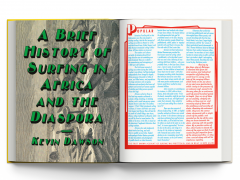
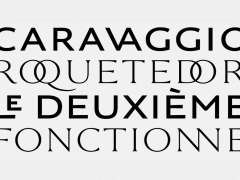

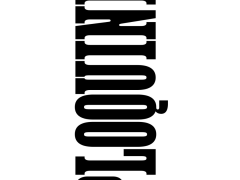


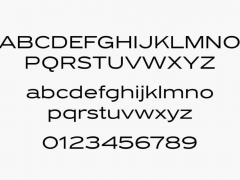



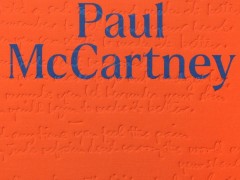

![Mechanical from the 1991 edition of The ABCs of [Triangle Square Circle]: The Bauhaus and Design Theory](assets/original/2022/07/29/ellen lupton four must read books typography design cooper hewitt 2.png)





